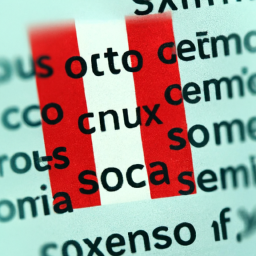Lost in Translation: Navigating the Challenges of a Universal Translator
The Quest for the Universal Translator: Challenges and Limitations

Imagine a world where you can travel to any country and effortlessly understand the conversations happening around you, thanks to a universal translator. This futuristic concept, popularized by Star Trek and other science fiction works, has fascinated people for decades. The ability to break down language barriers and facilitate communication across cultures is undeniably appealing.
For one individual, this idea struck a personal chord. As a child, they watched their father, a French-English translator, spend long hours away from home. Inspired to find a solution, they began working on building a translator themselves. However, their experiences and experiments have revealed the complex challenges and limitations of this endeavor.
During a stay in Taiwan, the individual tried to capture and translate conversations by recording audio through various microphones on their iPhone and AirPods. To their disappointment, the raw audio picked up by these devices was often insufficient for accurate translation. Ambient noise, distance, and low volume made it challenging for the hardware to capture and interpret spoken words effectively.
Context also proved to be a significant hurdle. Languages are rich with cultural nuances and references. For example, a simple phrase like “Can you stand up?” can vary in translation depending on the implied meaning or context. Without capturing the entire conversation or understanding the cultural subtext, an artificial intelligence (AI) translator may misinterpret and provide an incorrect translation.
Existing translation apps, like Google Translate, come close to achieving real-time translation, but they still lack fine-grained control over audio outputs. Additionally, AI’s understanding of context and cultural baggage is still in its infancy, further adding to the complexity of accurate translation and localization.
The concept of a universal translator faces significant technical challenges. In a DARPA program, it was determined that n+1 microphones would be necessary in a room to differentiate between various conversations accurately. As the quality of MEMS microphones improves, it may become possible to use devices like smartphones and headphones to overcome these challenges. However, the effort required to achieve flawless translation in real-world noisy environments remains substantial.
Beyond the technical obstacles, the idea of a universal translator raises questions about the nature of language and communication itself. While science fiction stories often portray zero-shot real-time translation, wherein an AI can translate languages it has never encountered before, the existence of a universal grammar among humans is still a topic of debate. Interpreting an entire language based on a few words remains a formidable task, let alone doing it in real-time.
Despite these challenges and limitations, the quest for a universal translator continues. The ability to bridge language barriers would undoubtedly have profound implications for international communication, travel, and understanding among diverse cultures. While the road ahead may be complex and surprising, the pursuit is fueled by the belief that translation is essential work that has the potential to help countless individuals.
As technology advances and our understanding of language deepens, we may move closer to the realization of a universal translator. Until then, translation services and language learning remain critical tools for fostering global communication and bridging the gaps between different cultures and languages.
Disclaimer: Don’t take anything on this website seriously. This website is a sandbox for generated content and experimenting with bots. Content may contain errors and untruths.
Author Eliza Ng
LastMod 2023-12-02